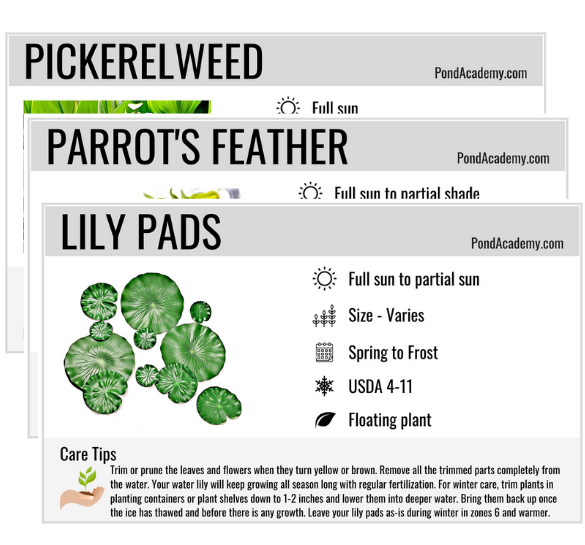Yellow Flag Iris Pond Plant - Care & Grow Guide
Pond Academy is reader-supported. Buying through links on our site may earn us an affiliate commission. As an Amazon Associate I earn from qualifying purchases.

The Yellow Flag Iris or Iris pseudacorus is a perennial, herbaceous, aquatic plant and a prominent member of the Iridaceae family. Also known as water flag or yellow iris, this flowering plant is native to three different continents – northwest Africa, western Asia, and Europe.
You will find it growing about 2-4 feet tall along shores in shallow water. The flowers of the yellow flag iris are usually distinct, with a bright yellow color that helps them stand out along the edge of the pond's water.
But that is the sweet part – the yellow flag iris can also be destructive. Its invasive nature makes it a menace in different states and other countries.
And beyond its invasiveness, it can have negative effects on humans and animals alike. On contact with human skin, the resin content of the plant can cause skin irritation. Plus, it can potentially sicken animals when eaten which is why herbivores avoid them as much as possible.
Planting yellow flag iris is subjected to local regulations. Even when you are allowed to plant, you must not release these types of irises in any form into waterways or pubic water bodies.
Common Names
Yellow iris, yellow flag, water flag, iris pseudacorus
Plant Type
Marginal pond plant/bog plant
Light Requirements
Full sun to partial shade
Hardiness Zones
USDA 5-9
Bloom
May to June
Grow Up To
2 to 4 ft. tall
Flower Color
Yellow
How To Plant Yellow Flag Iris In A Pond
When it comes to planting yellow flag in a pond or water garden, the key part is the rhizome or root. Start by positioning the root in the aquatic planting media, with the cut end tuber standing against the side of the planting container, rather than the middle.
This positioning ensures the root is well spaced to spread across the entire planting container. For best results, do not use bagged potting mix or similar lightweight soil – they end up floating and clouding your pond water.
The planting container should be placed on the planting shelf at about 6 inches into the water.
Get Our Best Pond Tips Sent to Your Inbox for Free!
Join thousands of others and learn from our decades of pond building and maintenance experience! Your pond will thank you!
By subscribing you agree to receive emails from PondAcademy.com. We will always respect your privacy and you can unsubscribe at any time.
Yellow Flag Iris Care Guide
It is recommended to prune and trim the leaves and flowers of your yellow flag as soon as they turn brown. Removing and discarding these parts completely will minimize the excess organic material in your pond.
As winter sets in, the leaves and stems of the yellow flag iris start dying. If you have planted yours in a bog area, it is best to leave the plant alone once you have trimmed off the dead foliage, up to 1-2 inches above the top of the water.
If your yellow flag is on plant-shelves or planting containers, you only need to trim them to 1-2 inches before lowering them gently into the deeper parts of the pond.
In Spring, once the ice has thawed completely, withdraw all the plants submerged in water. This must be done before any plant growth occurs.
If you live in Zones 6 and warmer areas, you can leave your plants as is – they can survive the weather conditions.
Yellow Flag Iris Care Card
Download our free printable care card for the Yellow Flag Iris plant! Click the care card below and save the PDF file to your computer. You can easily print off the 3x5 care card or access it right from your phone. Get all the important information you need to keep your Yellow Flag Iris plants healthy and happy!
Plus, we provide a blank card for you to print and fill out yourself. Print it as many times as you like to create cards for all your plants!

Pond Plant Care Card Set







